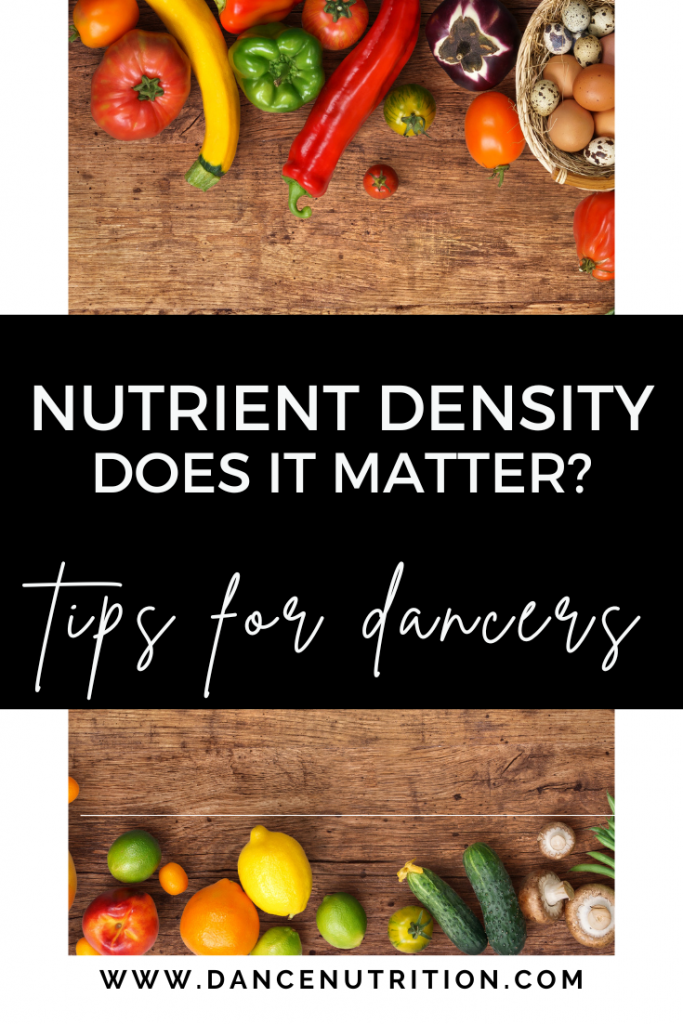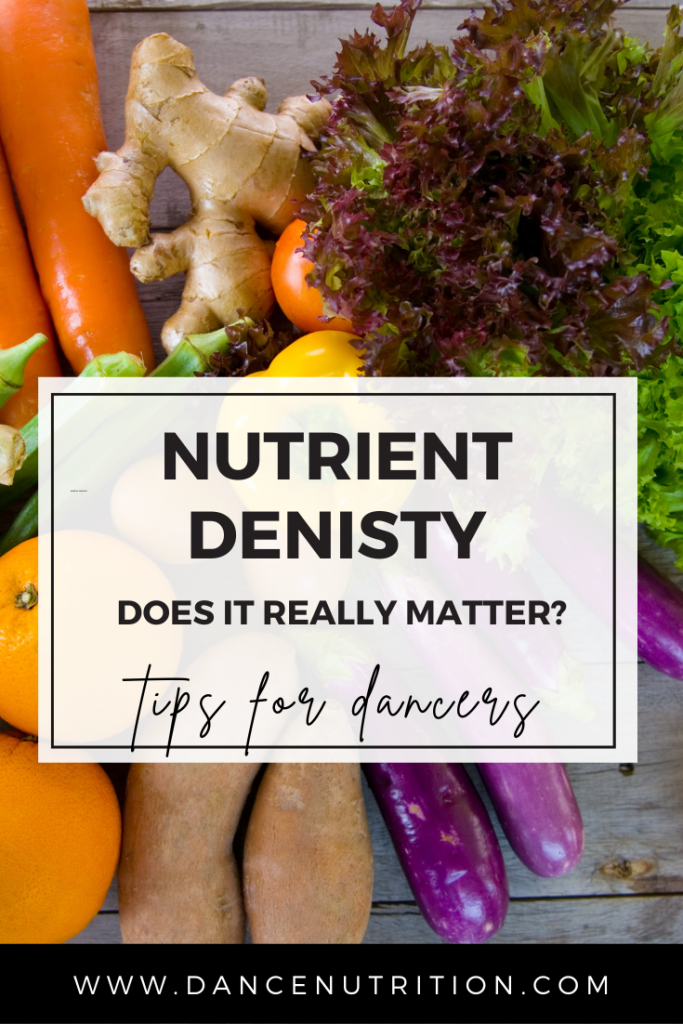When it comes to nutrition buzzwords, nutrient density is one of the most popular—and most misunderstood. While there’s no single standardized definition, nutrient density generally refers to the concentration of vitamins, minerals, and macronutrients within a given amount of food.
For example, when comparing two foods with the same calorie content, say 100 calories of candy versus 100 calories of yogurt, yogurt offers a wider spectrum of nutrients. It provides protein, carbohydrates, fats (if made from whole milk), and key micronutrients like calcium, vitamin A, and vitamin D. Candy, on the other hand, primarily offers sugar, a concentrated source of carbohydrate energy with few additional nutrients.
At first glance, this might suggest that the more nutrient-dense food is always the “better” choice. But for dancers, the real story is much more nuanced.
Why Nutrient Density Matters for Dancers
Dancers are high-performance athletes with elevated energy and nutrient needs. Choosing a variety of nutrient-dense foods can help:
- Enhance energy availability for long rehearsals and performances
- Support muscle recovery and injury prevention
- Bolster immune health and reduce fatigue
- Promote bone strength through nutrients like calcium, vitamin D, and protein
In this sense, nutrient density can be a helpful concept. It encourages dancers to build meals that include carbohydrates, protein, and fats, alongside the vitamins and minerals that support their overall performance and well-being.
But here’s the catch: when the term “nutrient density” gets tangled up with food moralizing— labeling foods as “good,” “bad,” “healthy,” “unhealthy,” “clean,” or “junk”— it can backfire, leading to food guilt, unnecessary restriction, and even disordered eating patterns.
When Nutrient Density Becomes a Diet Culture Trap
Clean eating trends often hijack the concept of nutrient density by setting rigid, unrealistic standards like:
- Only eating minimally processed foods
- Avoiding all processed or “refined” foods (we know that processed foods are very misunderstood- here’s why).
This mindset can make dancers feel like they’re failing when they reach for something that doesn’t fit the mold. But let’s be clear: health is multifaceted, and food is just one piece of the puzzle. Movement, rest, stress management, social connection, and mental well-being all play important roles too.
Even foods that aren’t traditionally labeled as “nutrient dense”— like candy, chips, or dessert— can still have value in a healthy, balanced diet.
Wait, Candy Has Nutrients?
It might sound ridiculous at first, “Rachel, candy isn’t healthy!” but let’s break it down.
Sugar is a carbohydrate, and carbohydrates are one of the three essential macronutrients. Their job? To provide energy. That’s a good thing!
The concern isn’t that candy contains sugar; it’s that it contains only sugar. As a concentrated source of fast-digesting energy, candy (and similarly, soda) can cause a quick spike in blood sugar levels. This triggers a surge of insulin and other hormones that work to bring those levels back down, often leading to a sudden dip in energy that leaves you feeling tired or sluggish.
But this doesn’t make candy bad. It just means it serves a specific purpose.
When Candy (and Other Low-Nutrient Foods) Can Fit
Instead of avoiding candy at all costs, dancers can use it strategically or simply enjoy it without guilt. Times when candy can make sense include:
- When quick energy is needed, such as during a long rehearsal or the final 15 minutes of a performance
- When it’s the most accessible option, like on the go or between classes
- When you simply want something sweet, and honoring that craving allows you to feel satisfied and move on
Restricting foods like candy often leads to overcompensation later— a binge-restrict cycle that harms both performance and mental health.
Balancing Nutrient Density Without Obsession
But why not aim for nutrient-dense options when it’s available? If it’s an option, then go for it!
Eating only candy will not offer your body the necessary nutrients it needs for anabolic growth. Including candy (if it’s something you enjoy) within a meal plan that also includes an abundance and variety of foods like grains, legumes, and produce is encouraged.
But the goal isn’t to chase “perfect” meals— it’s balance. You can boost the nutrient density of your food without falling into diet culture thinking. For example:
- Pair candy with nutrient-dense foods, like having chocolate with nuts or yogurt. The fat and protein help stabilize energy levels.
- Enjoy ice cream made with milk or cream— both provide calcium and vitamin D.
- Try new recipes if you enjoy them, but beware of the “healthified” dessert trap (like chickpea brownies). If you prefer the original version, that’s perfectly okay—and often more satisfying. While there’s nothing inherently wrong with boosting the protein and fiber content of your dessert, realize that enjoying the real deal will play a major role in your ability to feel satisfied.
What Dancers Should Prioritize Instead
Rather than striving for the “most nutrient-dense” choice every time, focus on:
- Food neutrality: All foods can fit within a healthy pattern of eating. Learn more about this concept here.
- Variety: The broader your food variety, the more likely you’ll meet your nutrient needs.
- Consistency: Regular meals and snacks help maintain energy levels and performance.
- Flexibility: Using The Healthy Dancer® Food Flexibility Algorithm can help you make confident, non-restrictive choices. Here’s an article that dives into the algorithm with a food commonly deemed less nutrient-dense: breakfast cereals.
The Takeaway
Nutrient density can be a helpful tool for dancers when it’s used to support energy, recovery, and health—not when it becomes a weapon of diet culture. Remember: you don’t have to eat perfectly to fuel optimally.
Your performance thrives not on restriction, but on nourishment, flexibility, and joy.




